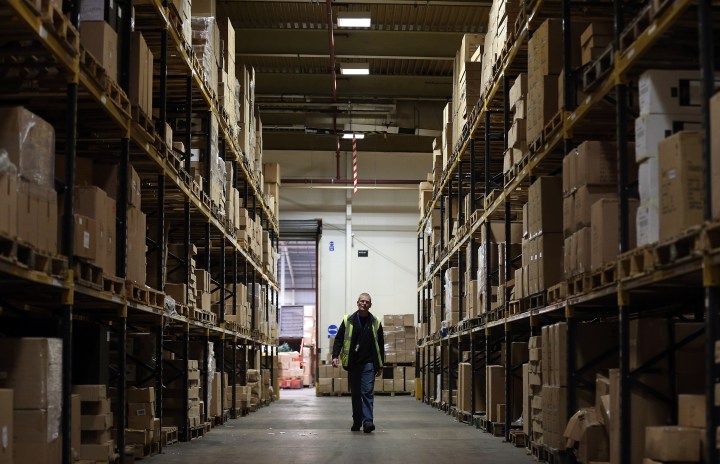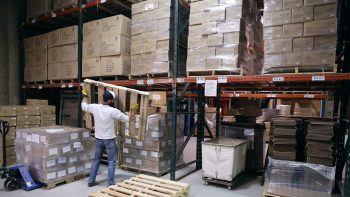
What’s driving all of the shortages in the pandemic?
What’s driving all of the shortages in the pandemic?

Supply chain shortages have become a common sight over the past year as businesses were hit with sudden shifts in consumer demand, global production disruptions, and shipping delays during the pandemic. Everything from toilet paper to semiconductor chips have been affected, and some businesses are looking to adapt their business models to include more flexibility, rather than prioritizing cost and efficiency.
Many companies rely on just-in-time systems, which involve having companies receive goods only as them need them for the production process, which reduces inventory costs. But as companies shift away from just-in-time models, inventories have been growing.
In April 2021, manufacturers’ and trade inventories were up 1.3%, compared to the year before, according to the U.S. Census Bureau.
“We have a really fragile global supply chain that had been overly leaned out,” said Dr. Nada Sanders, distinguished professor of supply chain management at Northeastern University in Boston. “Things are going to change, but it’s going to take a long time.”
She spoke to Marketplace host Kai Ryssdal about the factors driving supply chain shortages.
The following is an edited transcript of their conversation.
Nada Sanders: We saw the toilet paper shortages, hand sanitizer, you know, meat, right? And so, people realize now, “wait, hey, you know, I don’t just press a button and things magically show up.” Now imagine if that’s what toilet paper, what’s the case going to be when you’re talking about chips? When you’re talking about, you know pharma and so forth?
Kai Ryssdal: Yeah, and that’s where we find ourselves today, right, with the chips and the pharma. But let me back up to toilet paper, right? We all looked at — we, you know, regular consumers — went to the store, there was no toilet paper, and we consulted supply chain experts. And they said, “oh, my goodness, well, you know, residential toilet paper is really different than commercial toilet paper,” and we all kind of went, “oh, OK, that makes sense.” But it does kind of speak to the fragility of things, right, the idea that was a tough transition to make kind if it makes you go, “really, if that’s hard, what else aren’t we doing right,” you know?
Sanders: Exactly. And coming into the pandemic, our supply chains globally had become enormously complex, we also have relied on something called lean, or just-in-time inventory systems. That really means no, or very little inventory in the pipeline, and I’m telling you, we’re going to see a restructuring of supply chains. And we’re already seeing companies that are talking about bringing a lot of it back home, vertical integration. But bottom line is that we have a really fragile global supply chain that had been overly leaned out, things are going to change, but it’s going to take a long time.
Ryssdal: The reason, ostensibly, that those supply chains got so long and so complicated, and so just-in-time oriented, was to provide goods to consumers at the lowest cost to companies, obviously, but then consumers don’t have to pay higher prices. So do you suppose that as things get restructured, and supply chains get shortened and, you know, just-in-time inventory winds up being lots of stuff, in a warehouse somewhere, consumers are gonna wind up paying higher prices?
Sanders: Absolutely. What companies are doing is moving from a just-in-time to, you know, you might have heard some people call it a just-in-case. It is going to mean fewer choices, higher prices, longer lead times.

Ryssdal: Do you anticipate — and look, none of this is going to happen fast, right, that’s the caveat. But do you anticipate that supply chains get restructured in a way that might affect the recovery? I mean, things are looking really promising now, life is good, people are happy, they’re spending money, economy’s growing. Is supply chain gonna change that?
Sanders: I think that we really haven’t repopulated those supply chains. They haven’t been restructured, and it takes time. And I really worry, I mean, look at the cyber attacks. Any disruption that could happen puts us in a really vulnerable position. And also, we are so globally connected, and we look at countries like India, that is the primary source of generic drugs. So what could happen is we have ill workers, as we, you know, have a slowdown in that production. It’s kind of frightening.
Ryssdal: Alright, so just as a way to wrap this up, let me let me take you back to where we started. As we sit here in the in the midsummer-ish of 2021. What’s the toilet paper of this year that you’re thinking about, supply chain-wise?
Sanders: The toilet paper of this year is definitely the semiconductors. The other issue, I think is really important, is what’s going on with the labor markets. I think we are seeing some really dramatic shifts in terms of skill sets that are being required, wages. We are moving back into very much a service sector economy, but we don’t have enough service workers.
There’s a lot happening in the world. Through it all, Marketplace is here for you.
You rely on Marketplace to break down the world’s events and tell you how it affects you in a fact-based, approachable way. We rely on your financial support to keep making that possible.
Your donation today powers the independent journalism that you rely on. For just $5/month, you can help sustain Marketplace so we can keep reporting on the things that matter to you.


















